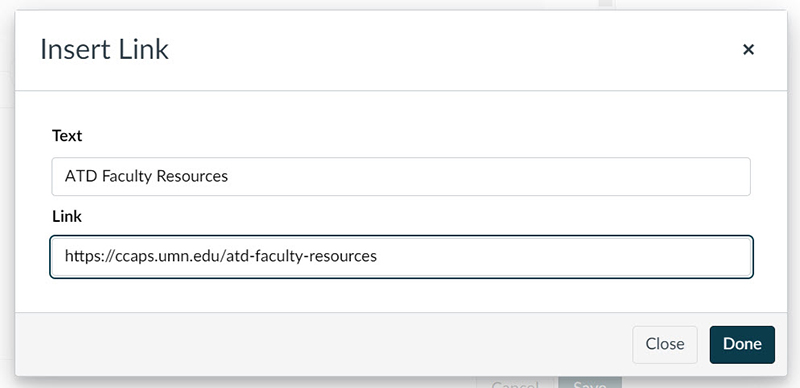While teaching your class you may want to add a web link to an article or journal. This tutorial will teach how to add a link. To make links accessible for all of your students in accordance with Accessible U, please take a moment to read their article on Hyperlinks to understand the best practices for making links.
Note: this tutorial teaches you how to make links to external URLs as opposed to links to internal content items in your course. It is important to know that using this method to link to other items in the course such as an assignment or discussion will cause the link to break during copies made during course updates. For a tutorial on making proper internal links, please see our article on Adding Internal Content Links.
Step 1: Navigate to the Content
Go to the syllabus, page, assignment, quiz or discussion in which you wish to place your external link. Click on the Edit button on the top-right corner.
Step 2: Add Text for Link and Click on Add Link Button
In the Rich Content Editor field type out the wording for the link within the field.
The text for the link should be meaningful and somehow relay what the purpose of the content in the link. Typically that is going to be the exact title of the article or webpage as seen if the student clicks on the link. The most important part is to not use raw URLs as the text. This is a usability and accessibility best practice. We encourage you to read our article on Web Links and Accessibility for more information.
When adding external links some best practices include:
- Copy plain text to link. When copying text that is going to be linked, try to paste it as plain text rather than as formatted text from a web page or Word document. Copying formatted text might include formatting issues in the Canvas HTML. To paste plain text you can copy a selection then placing the text cursor where you want the link, right-clicking and selecting "Paste as plain text" or pressing Ctrl+Shift+V to paste just the text without the link or extra HTML formatting.
- Strip the metadata from the URL. The metadata section usually occurs after the ? character. Remove the ? and everything after to get a stripped URL. For example:
URL with Metadata
https://getpocket.com/explore/item/women-once-ruled-the-computer-world-when-did-silicon-valley-become-brotopia?utm_source=pocket-newtab
URL without Metadata
https://getpocket.com/explore/item/women-once-ruled-the-computer-world-when-did-silicon-valley-become-brotopia
Once the text has been typed out, highlight the text and click on the chain-link button in editing menu at the top of the rich content editor.
Step 3: Adding the URL
A pop-up will appear. Copy in the entire URL (the web address) for the resource in the Link text field.
Then click Done. Your link has now been established.
Once you are done entering your content, go to the bottom of the screen to click the blue Save button.




